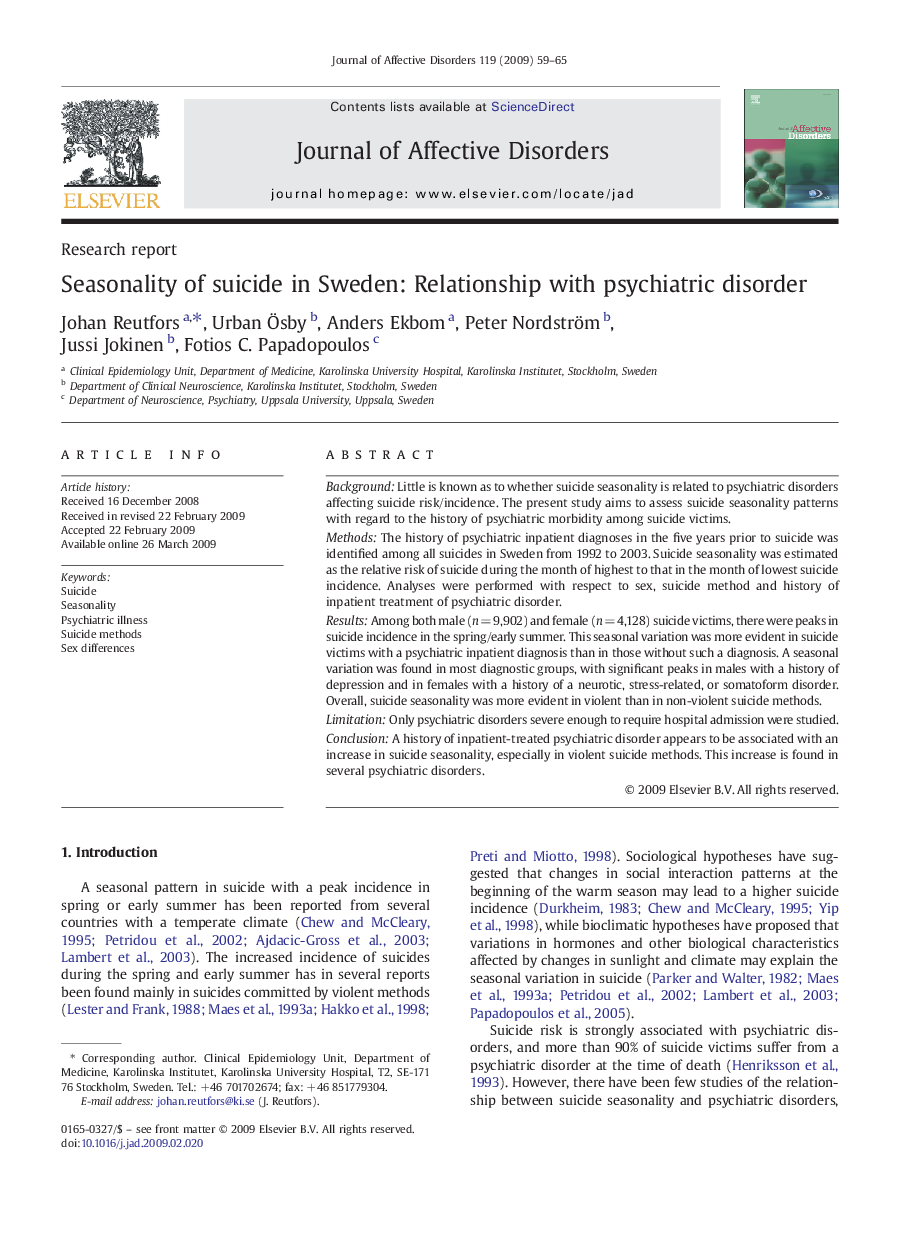| Article ID | Journal | Published Year | Pages | File Type |
|---|---|---|---|---|
| 6236555 | Journal of Affective Disorders | 2009 | 7 Pages |
BackgroundLittle is known as to whether suicide seasonality is related to psychiatric disorders affecting suicide risk/incidence. The present study aims to assess suicide seasonality patterns with regard to the history of psychiatric morbidity among suicide victims.MethodsThe history of psychiatric inpatient diagnoses in the five years prior to suicide was identified among all suicides in Sweden from 1992 to 2003. Suicide seasonality was estimated as the relative risk of suicide during the month of highest to that in the month of lowest suicide incidence. Analyses were performed with respect to sex, suicide method and history of inpatient treatment of psychiatric disorder.ResultsAmong both male (n = 9,902) and female (n = 4,128) suicide victims, there were peaks in suicide incidence in the spring/early summer. This seasonal variation was more evident in suicide victims with a psychiatric inpatient diagnosis than in those without such a diagnosis. A seasonal variation was found in most diagnostic groups, with significant peaks in males with a history of depression and in females with a history of a neurotic, stress-related, or somatoform disorder. Overall, suicide seasonality was more evident in violent than in non-violent suicide methods.LimitationOnly psychiatric disorders severe enough to require hospital admission were studied.ConclusionA history of inpatient-treated psychiatric disorder appears to be associated with an increase in suicide seasonality, especially in violent suicide methods. This increase is found in several psychiatric disorders.
